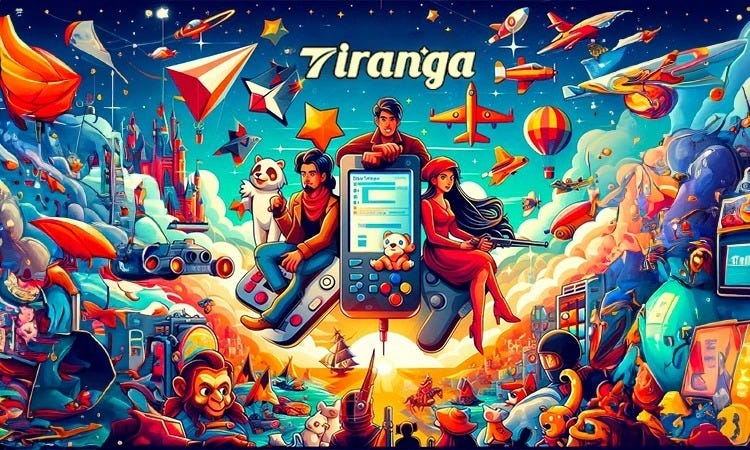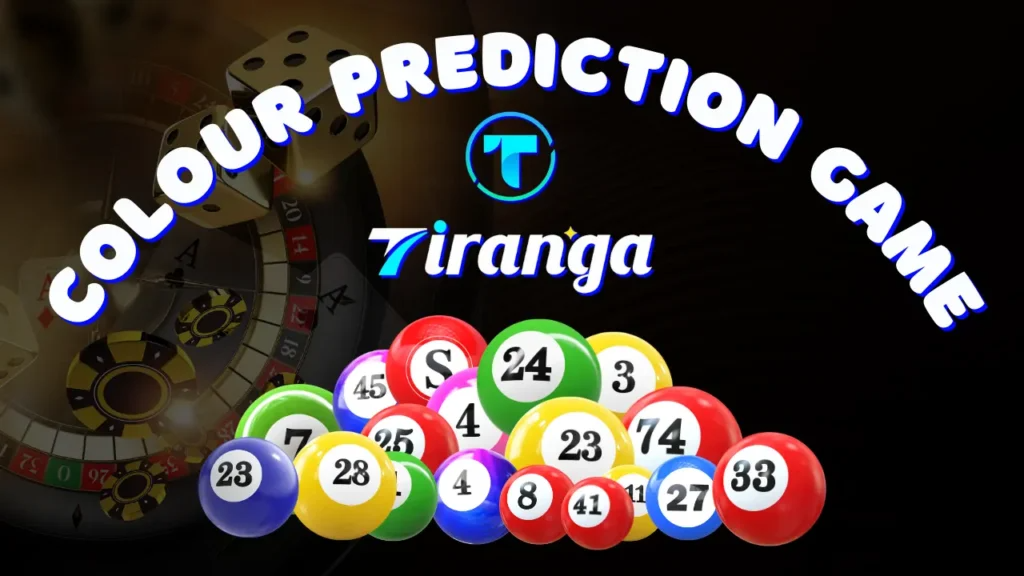Introduction to Tiranga Colour Trading
Tiranga Colour Trading represents a unique niche within the broader spectrum of the trading markets. The term ‘tiranga’, which translates to ‘tricolor’ in English, originates from the Indian national flag that features three prominent colors: saffron, white, and green. These colors are deeply embedded in cultural significance and symbolize various values such as sacrifice, peace, and prosperity. As such, Tiranga Colour Trading is not just a financial endeavor; it is also tied to national pride and heritage.
The origins of Tiranga Colour Trading can be traced back to a desire to integrate cultural symbols with commercial activities. Traders began to leverage the symbolism of the trifecta of colors to create a unique market that not only focuses on the aesthetic appeal of colors but also on their socio-political implications. This has led to a rise in products and services that highlight the tiranga theme, ranging from textiles to promotional merchandise and art. Investors and traders engaged in this market often find themselves balancing the traditional aspects of culture with the demands of modern commerce.
The emergence of Tiranga Colour Trading is emblematic of a larger trend where cultural motifs and symbols are being increasingly commodified. This trading segment operates on principles similar to conventional markets but offers distinct value propositions. By incorporating elements of cultural identity into market offerings, traders can create deeper connections with consumers who value heritage. Consequently, understanding this unique trading niche requires not only an appreciation of market dynamics but also an awareness of the cultural meanings and significance ascribed to the tiranga colors. As we delve deeper into this subject, we will explore the various dimensions of Tiranga Colour Trading, including its operational mechanisms, market trends, and future prospects.
The Symbolism of Colors in Tiranga Trading

The tiranga, or tricolor flag of India, is not only a national symbol but also a powerful representation of the philosophies underlying various trading strategies. Each color signifies a unique aspect that can be interpreted within the context of the trading market, allowing traders to align their strategies with cultural values and beliefs.
Saffron, the topmost color in the tiranga, symbolizes courage and sacrifice. In the trading world, this can be likened to the boldness required to take calculated risks. Traders who identify with the saffron philosophy may be more likely to engage in aggressive trading strategies, seeking high-reward opportunities despite inherent risks. This aspect of tiranga colour trading encourages practitioners to embrace courage, not just in trades but also in making long-term investment decisions that reflect their principles and values.
The color white, situated in the middle of the tiranga, represents peace and purity. In the realm of trading, this translates into the importance of clear and rational decision-making processes. Traders who resonate with the essence of white may prioritize ethical trading practices and strive for transparency in their trades. This philosophical underpinning fosters a market environment where traders are encouraged to conduct thorough research and maintain a balanced approach, leading to more sustainable trading practices aimed at long-term success.
Lastly, the color green embodies growth and prosperity. This element is crucial within the context of tiranga colour trading, as it epitomizes the ultimate goal of traders: achieving financial growth. Traders who align with the principles represented by green tend to focus on strategies that promote incremental gains, diversification, and long-term wealth accumulation. Such traders often emphasize investing in sustainable ventures that align with their values.
Through the lens of these diverse colors, the connection between cultural symbols and trading philosophies becomes evident, enriching one’s understanding of market behaviors and strategies.
Market Trends in Tiranga Colour Trading

The tiranga colour trading market has experienced a multitude of shifts in recent years, reflecting both evolving consumer preferences and broader economic influences. Historical data indicates a growing awareness and demand for products that embody the regional and national identity represented by the tiranga colours – saffron, white, and green. This trend has not only invigorated the market but has also attracted a diverse group of traders and entrepreneurs seeking to capitalize on the unique marketplace.
In recent months, there has been a noticeable shift in consumer behavior towards eco-friendly and ethically sourced products. As environmental concerns take center stage globally, traders in the tiranga colour market have begun to adapt by sourcing materials that align with these values. This transition has been accompanied by a growing emphasis on quality and authenticity, shaping competitive strategies within the industry. Traders who can effectively market their products as sustainable and culturally resonant are likely to gain a significant edge.
Additionally, local and global economic factors play a vital role in influencing the dynamics of tiranga colour trading. Fluctuations in raw material costs, changes in regulatory policies, and international trade agreements can significantly impact the pricing and availability of products. Moreover, the rise of digital platforms has facilitated access to the market, enabling traders to reach a broader audience. Social media has also become a powerful tool in promoting tiranga-themed products, giving rise to niche communities that appreciate the cultural significance of the colours.
As we look towards the future, traders in the tiranga colour market can anticipate ongoing changes driven by these trends. Awareness of historical data and an understanding of current consumer inclinations will be crucial for success. By staying attuned to these developments, traders can strategically position themselves in this vibrant and evolving market.
Key Players in Tiranga Colour Trading

The tiranga colour trading market is characterized by a diverse range of participants, including businesses, individual traders, and organizations that contribute significantly to its dynamics. Among the prominent players are textile manufacturers who specialize in producing fabrics dyed in the national colours. These manufacturers typically employ innovative dyeing techniques and sustainable practices to appeal to eco-conscious consumers. Their ability to adapt to trends and demand for unique designs plays a crucial role in shaping the offerings available in the market.
In addition to manufacturers, wholesalers and distributors serve as vital links between producers and retailers. They manage the logistics of moving tiranga coloured products from production facilities to shops, ensuring that the supply chain operates efficiently. Their extensive networks enable them to identify shifts in consumer preferences and adjust inventory levels accordingly, which helps maintain market stability. The relationship these players maintain with retailers is essential for introducing new products and attracting customers.
On the individual level, independent artisans and craftspeople contribute significantly to tiranga colour trading. They create handmade goods featuring the national colours, such as clothing, home decor, and accessories. Their focus on craftsmanship and authenticity provides an alternative to mass-produced items, and they often promote cultural narratives through their work. Additionally, e-commerce platforms have allowed these artisans to reach broader audiences, expanding their market influence beyond local borders.
Lastly, non-profit organizations and cultural institutions also play a crucial role in this sector. They often launch campaigns promoting the significance of the tiranga colours, thus raising awareness and encouraging community engagement in using these colours in various aspects. By providing education and resources, they enhance the overall market dynamics, emphasizing the cultural and emotional importance of tiranga colour trading.
Strategies for Successful Tiranga Colour Trading

Tiranga colour trading presents a distinct market characterized by its vibrant hues and unique dynamics. Engaging in this specialized form of trading requires a thoughtful approach, incorporating several strategies to ensure success. One of the fundamental techniques is market analysis. Traders should begin by assessing the current market conditions, examining historical performance, and monitoring the impact of seasonal trends on tiranga colours. This foundational knowledge equips traders with the insight needed to make informed decisions. Regularly reviewing both macroeconomic indicators and sector-specific news can also provide a contextual understanding of the market environment.
Another essential strategy in tiranga colour trading involves trend identification. Traders should utilize technical analysis tools to recognize patterns that indicate potential price movements. For instance, the application of moving averages and relative strength indices can help pinpoint upward or downward trends in the market. Being adept at reading these signals allows traders to enter or exit positions at strategically advantageous times, thus maximizing profit potential. Staying updated on global events that may influence consumer preferences and colour demand can further enhance this trend identification process.
Furthermore, effective risk management is vital in the realm of tiranga colour trading. Establishing a clear risk-reward ratio for each transaction will assist traders in protecting their capital against market volatility. Implementing stop-loss orders is an advisable practice, as it can prevent excessive losses while maintaining the opportunity for gains. Additionally, diversifying investments across various colours can mitigate the risks associated with individual market fluctuations. By cultivating a robust trading plan grounded in thorough analysis, trend awareness, and prudent risk management, traders can significantly enhance their decision-making processes and overall success in the tiranga colour trading arena.
Case Studies: Successful Tiranga Colour Traders

The world of tiranga colour trading has seen numerous individuals achieve remarkable success, showcasing various strategies and philosophies that have contributed to their accomplishments. One such trader, Arun Verma, began his venture into this niche market with a fascination for the vibrancy of colours associated with the Indian flag. Starting with a modest investment, Arun focused on understanding market trends and consumer preferences. His philosophy centers around the idea that emotional connection to colours can significantly influence purchasing decisions. By employing thorough market research and leveraging social media platforms for targeted advertising, he managed to increase his sales by 150% within a year.
Another illustrative case is that of Meena Kapoor, who approached tiranga colour trading from a cultural perspective. Meena, an art enthusiast, capitalized on the connection between traditional art forms and the colours of the tiranga. Her strategy involved collaborating with local artisans to create unique products that reflected the spirit of the Indian flag. By emphasizing storytelling in her marketing campaigns, Meena successfully tapped into the emotional aspects of consumers’ purchases, resulting in a loyal customer base. Her focus on sustainable practices also resonated well with environmentally conscious shoppers, enabling her to thrive in this vibrant market.
Additionally, Rakesh Singh represents the analytical trader who meticulously studies market data. He has developed algorithms that predict colour trends and anticipate demand fluctuations in the tiranga colour trading landscape. Rakesh’s strategy relies heavily on data analytics, allowing him to optimize his inventory and pricing strategies effectively. His accurate forecasting and agile response to market changes have led him to achieve regular profits and establish a strong reputation within the industry.
These case studies serve as examples of how diverse philosophies and strategies can lead to success in the tiranga colour trading market. By tailoring their approaches to incorporate personal insights, cultural significance, or data-driven decisions, these traders illuminate potential pathways for others looking to make their mark in this unique field. In conclusion, the integration of different strategies, coupled with a deep understanding of market dynamics, can inspire aspiring traders to navigate the complexities of this vibrant marketplace.
Challenges in Tiranga Colour Trading

The tiranga colour trading market is characterized by several challenges that traders must navigate carefully to achieve success. One of the primary challenges is market volatility. Prices can experience significant fluctuations due to a variety of factors, including supply and demand dynamics, global economic conditions, and changes within the local market. This unpredictability can make it difficult for traders to forecast their profits and losses accurately, requiring them to employ advanced analytical tools and risk management strategies to safeguard their investments.
In addition to market volatility, traders in the tiranga colour trading space often face regulatory hurdles. Different jurisdictions impose varying regulations that dictate how trading activities must be conducted. Compliance with these regulations can be labor-intensive and may require traders to invest considerable time and resources into understanding legal frameworks. Navigating through bureaucratic layers can also lead to delays in executing trades, which might result in missed opportunities or unfavorable trading conditions.
Cultural challenges further complicate the landscape of tiranga colour trading. Each market may have unique cultural elements that influence trading practices. For instance, understanding local customs and consumer preferences is crucial for traders, as these factors can impact product demand and supply chains. Misinterpreting cultural nuances can lead to significant errors in strategy and hinder a trader’s ability to connect with their target audience effectively.
As traders delve deeper into the tiranga colour trading market, it becomes essential to address these challenges proactively. By developing strategies that factor in market volatility, remaining informed about regulatory requirements, and respecting cultural sensitivities, traders can enhance their capabilities and prepare themselves to manage the risks associated with this unique trading environment.
The Future of Tiranga Colour Trading

The tiranga colour trading market is poised for significant evolution in the coming years, primarily driven by technological advancements and shifting consumer behaviors. As we look ahead, it becomes clear that digital trading platforms will play an increasingly critical role. These platforms offer users innovative tools and data analytics features that enable them to make informed decisions efficiently, thereby enhancing trading experiences. The advent of such technologies is expected to attract a wider audience, ranging from seasoned investors to novices, contributing to market growth.
Moreover, the growing inclination towards sustainable and ethically sourced products is likely to reshape the tiranga colour trading landscape. Many consumers are becoming more conscious of the origins and environmental impact of the products they purchase. This trend has led to a demand for transparently traded colours that reflect these values, thus prompting traders to adapt their strategies. In this environment, businesses that prioritize sustainability in their supply chains may find themselves at an advantage, appealing to a more responsible clientele.
Another noteworthy trend is the rise of mobile trading applications, which allows participants to engage in tiranga colour trading seamlessly from anywhere. This mobility not only enhances accessibility but also fosters a new generation of traders who prefer quick, real-time transactions over traditional methods. As more traders adopt mobile platforms, the market may witness an increase in trade volume and diversification of trading strategies.
In summary, the future of tiranga colour trading looks promising, driven by technological innovation, a focus on sustainability, and the increasing use of mobile applications. These factors may contribute to a more dynamic and expansive market that is responsive to contemporary consumer values and preferences.
Conclusion: Embracing Tiranga Colour Trading
In the realm of contemporary trading practices, tiranga colour trading presents a distinctive method that intertwines cultural significance with market strategies. Throughout this article, we have delved into the fundamental dynamics that define this unique market, where the vibrancy of colours represents more than mere aesthetics; it symbolizes heritage and collective identity. Understanding these cultural nuances is vital, as they greatly influence market behavior and trader sentiment.
The significance of colour in tiranga colour trading is deeply rooted in its historical context, echoing a sense of patriotism and unity among individuals engaged in this practice. By appreciating these cultural underpinnings, traders can foster a deeper connection with their trading activities, enhancing their experience and engagement in the market. Furthermore, we have explored key strategies and considerations that traders can adopt to navigate the complexities of this niche market. Acquiring knowledge about the psychological impact of colour on trading decisions allows individuals to make informed choices, ultimately improving their trade outcomes.
As we conclude, it is evident that embracing tiranga colour trading not only enriches one’s trading strategy but also nurtures a cultural appreciation that can lead to more fulfilled trading practices. The intersection of market dynamics and cultural representation creates opportunities that are both rewarding and meaningful. By integrating the knowledge and insights shared in this discussion, traders are encouraged to actively participate in this unique trading style. In doing so, they will not only enhance their trading experience but also contribute to a broader narrative of cultural consciousness within the trading community.






